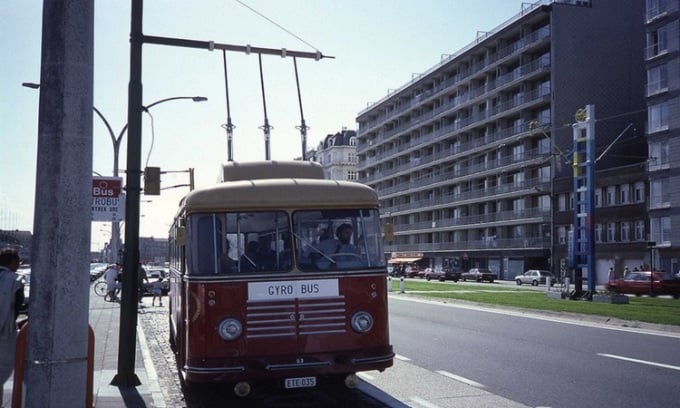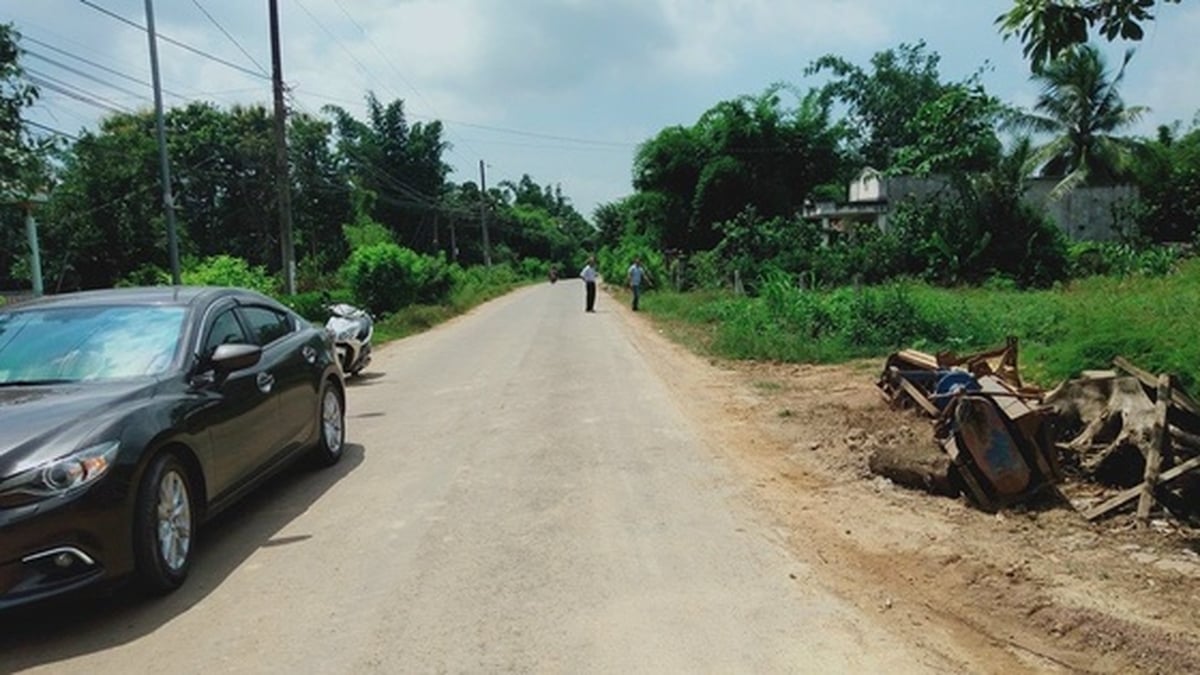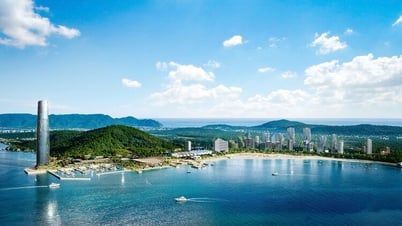In the 1940s, Swiss engineers developed a new type of zero-emission electric bus that used large rotating flywheels to store energy instead of rechargeable batteries.

Currently, there is only one gyrobus left in the world, located in Antwerp, Belgium. Photo: Amusing Planet
Many Swiss cities at that time used trams (powered by electricity from overhead cables) as public transportation, running along predetermined routes. Installing overhead power lines on new routes was too expensive, according to Amusing Planet. Due to Wanting to create a quieter and cleaner vehicle, free from the constraints of overhead power lines, Bjarne Storsand, chief engineer of Maschinenfabrik Oerlikon, came up with the idea of the gyrobus in 1946.
The Gyrobus is powered by an electric motor, which uses electricity produced by a generator that uses a flywheel to store energy. The flywheel spins at the charging station thanks to three long arms mounted on the vehicle's roof. When the flywheel reaches its maximum speed of 3,000 rpm, it is fully charged. At that point, the bus can travel 6 km at a speed of 50 - 60 km/h, depending on the load on the vehicle and the gradient of the route. Sometimes, the Gyrobus can even travel 10 km on a single charge.
The flywheels used by the engineers are large (160 cm in diameter) and heavy (1.5 tonnes), and are enclosed in an airtight chamber filled with hydrogen at reduced pressure to reduce drag. Charging a stationary flywheel takes 40 minutes, but when the flywheel is spinning, it only takes 2-5 minutes to replenish energy. The higher the voltage, the shorter the charging time. Charging stations along the route ensure that the flywheel's rotation speed never drops to a level that affects the bus's performance and speed. For example, the 4.5 km route in Yverdon-les-Bains has four charging points.
Putting a large rotating flywheel inside the vehicle has two unintended consequences. The gyroscopic effect of the flywheel makes it difficult for the bus to change direction, leading to some awkward situations, especially when cornering. On the other hand, the system provides a very smooth and balanced ride.
Gyrobuses were used in limited numbers in several cities such as Switzerland, Belgium, and the Belgian Congo until 1960. The gyrobus operating in Léopoldville was the largest, with 12 vehicles on four routes of about 20 km. However, high energy consumption led to the system being discontinued. Similarly, gyrobus services in Ghent, Belgium, and Yverdon-les-Bains were also discontinued due to economic problems. Today, only one gyrobus survives, restored, preserved, and on display at the Flemish Train and Bus Museum in Antwerp.
An Khang (According to Amusing Planet )
Source link





































































































Comment (0)